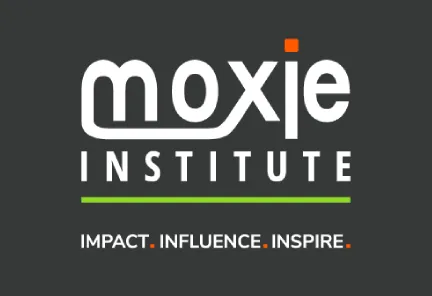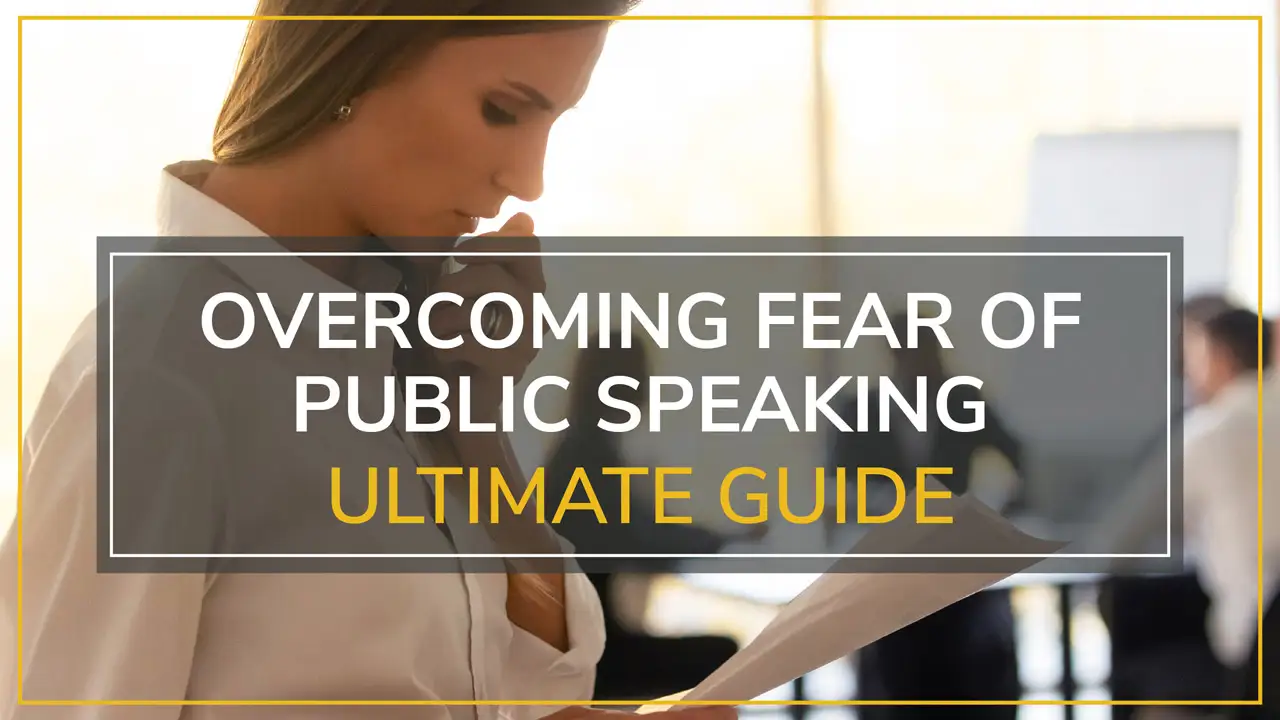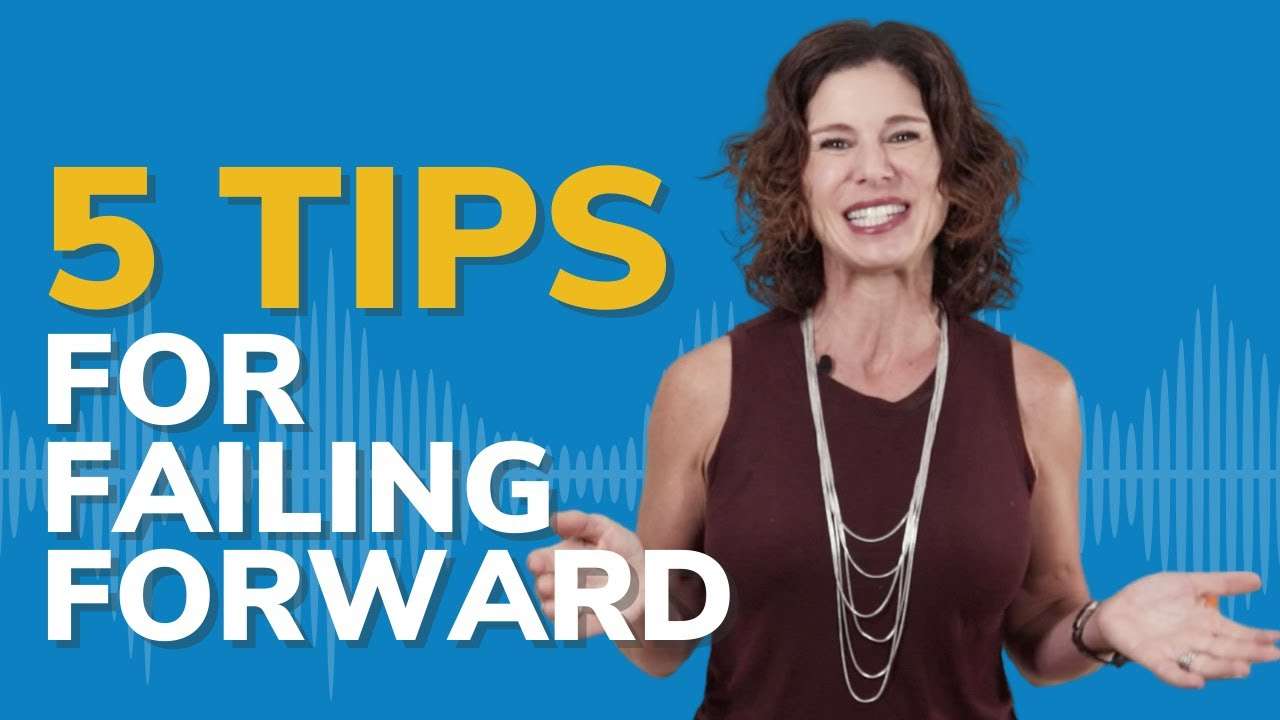Introduction: The Confidence Code That Separates True Leaders
Imagine: Two equally credentialed executives walk into the same boardroom. It’s one thing to have good ideas and quite another to command attention the instant you say something. The disparity is not one of talent, experience, or even the value of their message—it’s the level at which they are confident in communication.
To learn how to speak with confidence is to figure out not only how to suppress any trembling but also the particular vocal, physical, and psychological ways of conferring authority and engendering trust. Here at Moxie Institute, where we’ve coached thousands of executives at Fortune 500 companies, we’ve pinpointed the specific “confidence code” that distinguishes leaders who command a room from those who merely inhabit it.
Through our neuroscience-backed approach to executive presence training, we’ve found that confident speaking is like a code, and like any code, follows predictable patterns. The executives who command authority—whether presenting to boards, updating investors, or leading crisis communications—have mastered certain techniques that can be taught and replicated.
This comprehensive guide reveals the research-backed strategies we teach in our elite executive coaching programs. You’ll discover how to harness the psychology of influence, develop unshakeable vocal authority, and master the mental frameworks that create genuine confidence under pressure.
By the end of this article, you’ll possess the tools to transform your speaking presence from good to commanding—the kind of leadership presence that doesn’t just get noticed, but gets results.
The Neuroscience of Confident Communication
Anyone who is looking to become a master of executive communication will benefit from an understanding of how confidence is perceived in the brain. The latest from neuroscience shows confident speakers do something to listeners’ brains right away that makes them credible and influential.
How Your Brain Processes Authority
The human brain is quick to make assumptions of authority from a voice. According to research published in the Nature Scientific Reports journal, listeners evaluate speaker credibility based on vocal characteristics before processing actual content.
This phenomenon—the “authority heuristic”—explains why some executives have a natural ability to get attention while others struggle to maintain engagement. The brain’s rapid assessment system evaluates:
- Vocal pitch and resonance patterns that signal confidence
- Speech rhythm and pacing that indicate control and preparation
- Intonation patterns that convey certainty versus uncertainty
- Vocal stability that suggests emotional regulation
In our work with C-suite executives, we’ve observed that leaders who understand these neural mechanisms can deliberately activate them. One Fortune 100 CEO we coached increased his board approval ratings by 34% simply by adjusting his vocal delivery patterns to align with these neurological triggers.
The Physiological Markers of Confidence
Confident communication isn’t just psychological—it’s deeply physiological. The body produces specific hormonal and neurological changes that both create and communicate confidence to others.
Research from Harvard Business School demonstrates that “power posing” for just two minutes increases testosterone levels by 16% and decreases cortisol by 25%. These hormonal shifts create measurable changes in:
- Voice resonance and projection
- Gesture fluidity and purposefulness
- Eye contact patterns and intensity
- Breathing depth and rhythm
- Facial expression authenticity
Expert Insight from Our Research: Through our performance psychology methodology, we’ve found that executives who learn to recognize and regulate these physiological markers can access confident states on demand, even in high-pressure situations.
Essential Takeaway: Your brain and body are constantly communicating your confidence level to others. By understanding and controlling these signals, you can project authority even when you don’t initially feel it.
Vocal Authority: The Foundation of Executive Presence
Your voice is your most powerful tool for establishing executive presence. The specific way you use your voice can either reinforce or undermine your authority, regardless of your message content.
Developing Your Leadership Voice
The concept of a “leadership voice” isn’t metaphorical—it’s a specific set of vocal characteristics that signal authority and competence. Through our work with thousands of executives, we’ve identified the precise vocal elements that create commanding presence.
Optimal Vocal Characteristics for Executive Presence:
- Lower pitch range – Research shows that speakers with lower vocal pitch are perceived as more authoritative and trustworthy
- Controlled pace – Speaking 10-15% slower than conversational pace suggests thoughtfulness and control
- Full breath support – Deep breathing creates vocal resonance that projects confidence
- Precise articulation – Clear consonants and vowels signal attention to detail and professionalism
- Strategic volume variation – Purposeful volume changes maintain attention and emphasize key points
Pro Tip from Our Voice Coaches: The most effective executives we train spend 15 minutes daily practicing vocal exercises that strengthen their natural authority. This includes humming exercises to develop resonance and practicing speaking with full breath support.
One senior executive we coached discovered that her habit of ending statements with an upward inflection (uptalk) was undermining her authority in board meetings. After six weeks of targeted vocal training, she reported a noticeable shift in how colleagues responded to her proposals.
Strategic Use of Pauses and Emphasis
Mastering the strategic use of silence and emphasis is perhaps the most underutilized confidence technique among executives. The way you pause and emphasize key points can dramatically enhance your perceived authority.
The Power of Strategic Pauses:
- Transition pauses (1-2 seconds) signal shift between ideas
- Emphasis pauses (2-3 seconds) highlight critical information
- Reflection pauses (3-4 seconds) allow processing time for complex concepts
- Authority pauses (4-5 seconds) create anticipation and command attention
Advanced Emphasis Techniques:
- Volume emphasis – Slightly increasing volume on key words
- Pace emphasis – Slowing down on important concepts
- Pitch emphasis – Strategic pitch changes to highlight significance
- Pause emphasis – Using silence before and after critical points
Practice Exercise – Master the Power Pause: Choose a recent presentation or speech you’ve given. Identify the three most important points you made. Practice delivering these points with a 3-second pause before each one, followed by slower delivery of the key message. Notice how this changes the impact and authority of your communication.
Research Insight: Studies from the Journal of Communication show that strategic pauses increase message retention by up to 38% and speaker credibility ratings by 42%.
The Psychology of Confident Body Language
While vocal techniques form the foundation of confident speaking, your physical presence either reinforces or contradicts your vocal authority. The psychology of body language operates on both conscious and unconscious levels, making it a critical component of executive communication.
Power Positioning Techniques
Physical positioning in a room isn’t accidental—it’s strategic. The most confident executives we’ve trained understand that their spatial choices communicate authority before they even speak.
Territory and Space Management:
- Claim your space – Avoid contractive postures that minimize your presence
- Use purposeful movement – Deliberate positioning changes maintain attention
- Maintain appropriate proximity – Understanding optimal distance for different situations
- Control entry positioning – Strategic placement when entering rooms or meetings
Advanced Positioning Strategies:
- The Triangle of Authority – Positioning yourself to create visual triangles with key decision-makers
- Elevation advantage – When possible, use slight elevation to enhance authority
- Open positioning – Avoiding barriers between yourself and your audience
- Grounding techniques – Physical stability that projects mental stability
Professional Application: One executive we coached struggled with confidence during investor presentations. By implementing strategic positioning techniques—including claiming more space and using purposeful movement—he secured 40% more investment commitments in his next funding round.
Reading and Responding to Room Dynamics
Confident speakers don’t just project authority—they read and respond to the energy and dynamics of their environment. This situational awareness is what separates good executives from truly commanding leaders.
Environmental Confidence Factors:
- Energy assessment – Reading the room’s attention and engagement levels
- Hierarchy recognition – Understanding formal and informal power structures
- Timing sensitivity – Recognizing optimal moments for key messages
- Resistance identification – Spotting and addressing skepticism or opposition
Dynamic Response Techniques:
- Energy matching – Aligning your energy with room requirements
- Attention recapture – Techniques for regaining focus when attention wanes
- Resistance addressing – Directly acknowledging and handling objections
- Momentum building – Creating forward progress and positive engagement
Master-Level Insight: The most confident executives we train develop what we call “room radar”—the ability to simultaneously deliver their message while monitoring and responding to subtle audience cues. This dual awareness creates dynamic, responsive communication that maintains authority while building connection.
Speaking with Confidence in High-Stakes Situations

True confidence is tested in high-pressure environments where the stakes are highest. The techniques that work in everyday conversations may not be sufficient for board meetings, investor pitches, or crisis communications.
Board Meeting Mastery
Board meetings represent the ultimate test of executive presence. The combination of high stakes, time pressure, and powerful personalities requires specific confidence strategies.
Pre-Meeting Confidence Preparation:
- Mental rehearsal – Visualizing successful interactions and outcomes
- Physiological preparation – Breathing exercises and physical warm-ups
- Content mastery – Over-preparing to create unshakeable confidence
- Scenario planning – Anticipating challenges and preparing responses
During-Meeting Confidence Techniques:
- Opening authority – Establishing credibility in your first 30 seconds
- Data confidence – Presenting numbers with certainty and clarity
- Question handling – Responding to challenges with composure
- Influence building – Creating alignment and buy-in progressively
Advanced Board Communication Strategy: Based on our work with Fortune 500 executives, the most successful board presentations follow a specific confidence pattern: strong opening statement, three key supporting points with data, acknowledgment of one potential challenge with solution, and clear call to action.
Investor Pitch Confidence
Investor presentations demand a unique blend of confidence and authenticity. The ability to project certainty while acknowledging risks requires sophisticated communication skills.
The Investor Confidence Framework:
- Vision confidence – Articulating the future with conviction
- Financial confidence – Presenting projections with appropriate certainty
- Risk confidence – Acknowledging challenges while maintaining optimism
- Execution confidence – Demonstrating capability through communication style
Pitch Confidence Techniques:
- Storytelling authority – Using narrative to build credibility
- Data presentation – Making numbers compelling and memorable
- Objection anticipation – Addressing concerns before they’re raised
- Closing confidence – Ending with certainty and clear next steps
Real-World Application: A startup CEO we coached increased his Series A funding by 150% after implementing our investor confidence framework. The key was learning to project certainty about uncertain outcomes while maintaining authenticity about challenges.
Crisis Communication Leadership
Crisis situations reveal authentic leadership presence more than any other scenario. The ability to maintain confidence while delivering difficult messages is the hallmark of true executive authority.
Crisis Communication Confidence Elements:
- Immediate presence – Responding quickly with authority
- Transparent confidence – Balancing honesty with reassurance
- Solution focus – Emphasizing actions rather than dwelling on problems
- Stakeholder management – Addressing different audiences with appropriate confidence
Advanced Crisis Techniques:
- Emotional regulation – Maintaining composure under extreme pressure
- Message clarity – Simplifying complex situations without oversimplification
- Authority projection – Leading through uncertainty with confidence
- Recovery communication – Rebuilding trust and credibility post-crisis
Expert Insight: Through our crisis communication training, we’ve learned that the most confident leaders during crises share one trait: they focus on what they can control rather than what they cannot. This mental framework allows them to project authority even in chaotic situations.
Common Confidence Barriers and How to Overcome Them
Even the most accomplished executives face internal obstacles that undermine their speaking confidence. Understanding and addressing these barriers is essential for developing authentic, lasting confidence.
The Imposter Syndrome Trap
Many senior executives struggle with imposter syndrome, especially when speaking to audiences they perceive as more knowledgeable or experienced. This internal doubt manifests in hesitant speech patterns, over-qualification of statements, and defensive body language.
Overcoming Imposter Syndrome:
- Reframe expertise – Focus on your unique perspective rather than absolute knowledge
- Preparation confidence – Use thorough preparation to build legitimate confidence
- Value identification – Clearly articulate what you uniquely bring to the conversation
- Experience anchoring – Connect current situations to past successes
The Perfectionism Paralyzer
Perfectionist executives often struggle with confidence because they fear making mistakes or appearing less than flawless. This fear creates hesitation and reduces the natural flow of confident communication.
Perfectionism Solutions:
- Excellence vs. perfection – Focusing on strong delivery rather than flawless execution
- Mistake recovery – Developing skills to handle errors gracefully
- Progress mindset – Viewing each speaking opportunity as improvement rather than judgment
- Authenticity over perfection – Embracing genuine communication over polished performance
The Comparison Trap
Many executives undermine their confidence by constantly comparing themselves to other speakers, often focusing on others’ strengths while ignoring their own.
Comparison Antidotes:
- Unique value proposition – Identifying what makes your communication distinctive
- Strength amplification – Building on existing communication strengths
- Authentic voice – Developing your natural speaking style rather than copying others
- Continuous improvement – Focusing on personal growth rather than competitive comparison
Recovery Strategies in Real-Time:
When confidence wavers during actual speaking situations, these techniques can help you recover quickly:
- Breathing reset – Deep breathing to restore physiological calm
- Grounding technique – Feeling your feet on the floor to restore presence
- Positive self-talk – Brief internal confidence affirmations
- Audience refocus – Shifting attention from self to audience needs
Professional Development Exercise: Identify your primary confidence barrier from the list above. For the next week, practice one specific technique to address this barrier during every speaking opportunity, no matter how small. Track your progress and notice improvements in your overall confidence.
The Executive's Confidence Building System

Sustainable confidence isn’t built overnight—it’s developed through systematic practice and progressive skill building. Our research-backed system for developing unshakeable speaking confidence draws from performance psychology and adult learning theory.
The Four-Stage Confidence Development Model
Stage 1: Foundation Building (Weeks 1-2)
- Vocal technique development
- Basic body language awareness
- Breathing and physiological control
- Simple message structure
Stage 2: Skill Integration (Weeks 3-4)
- Combining vocal and physical techniques
- Practicing in low-stakes situations
- Developing personal speaking style
- Building consistency
Stage 3: Pressure Testing (Weeks 5-6)
- Practicing under simulated pressure
- Handling interruptions and challenges
- Developing recovery skills
- Building adaptability
Stage 4: Mastery Application (Weeks 7-8)
- Applying skills in high-stakes situations
- Refining personal approach
- Developing advanced techniques
- Building sustainable practices
Daily Confidence Practices
Morning Confidence Routine (5 minutes):
- Vocal warm-up exercises
- Power posing for 2 minutes
- Positive visualization
- Breath work
Mid-Day Confidence Check (2 minutes):
- Posture assessment and adjustment
- Breathing reset
- Voice projection practice
- Mental confidence affirmation
Evening Confidence Review (3 minutes):
- Reflecting on speaking interactions
- Identifying improvement opportunities
- Planning next-day applications
- Positive reinforcement
Weekly Confidence Challenges:
- Week 1: Make one presentation without notes
- Week 2: Lead a meeting using only strategic pauses
- Week 3: Handle a difficult conversation with confidence
- Week 4: Deliver impromptu remarks with authority
Research-Backed Insight: Studies from the American Psychological Association show that consistent daily practice of confidence techniques creates lasting neural pathways, making confident behavior automatic rather than conscious.
Advanced Confidence Techniques for Elite Leaders
At the highest levels of executive leadership, confidence becomes an art form. These advanced techniques separate good leaders from transformational ones.
The Neuroscience of Influence
Understanding how your confident communication affects others’ brain chemistry allows you to create deeper influence and connection.
Neurochemical Triggers:
- Oxytocin activation – Building trust through authentic vulnerability
- Dopamine stimulation – Creating anticipation and reward through storytelling
- Endorphin release – Using appropriate humor and positive emotion
- Serotonin enhancement – Projecting status and competence appropriately
Advanced Influence Techniques:
- Cognitive anchoring – Establishing reference points that favor your position
- Emotional priming – Creating optimal emotional states in your audience
- Social proof integration – Using group dynamics to reinforce your message
- Reciprocity activation – Creating obligation through value delivery
The Meta-Confidence Framework
Elite executives develop what we call “meta-confidence”—confidence about their confidence. This advanced level involves:
Confidence Awareness:
- Recognizing your confidence patterns
- Understanding your confidence triggers
- Monitoring your confidence impact
- Adjusting confidence levels appropriately
Confidence Calibration:
- Matching confidence levels to situations
- Avoiding over-confidence or under-confidence
- Reading audience needs for confidence
- Adapting confidence expression culturally
Professional Mastery Insight: The most successful executives we’ve trained develop the ability to consciously adjust their confidence levels based on situational requirements. Sometimes the most confident thing you can do is express appropriate uncertainty or seek input from others.
Confidence in Complex Stakeholder Environments
Managing multiple stakeholders with different needs and perspectives requires sophisticated confidence techniques.
Multi-Stakeholder Confidence Strategies:
- Stakeholder mapping – Understanding different confidence needs
- Message customization – Adapting confidence expression per audience
- Conflict navigation – Maintaining authority during disagreements
- Consensus building – Using confidence to create alignment
Implementation Excellence: One multinational CEO we coached successfully navigated a complex merger by developing stakeholder-specific confidence strategies. He used different confidence approaches for shareholders, employees, customers, and regulators, while maintaining consistent authentic leadership.
Your Confidence Mastery Action Plan
Transforming your speaking confidence requires systematic implementation. This practical action plan provides a roadmap for developing commanding presence over the next 30 days.
Week 1: Foundation Assessment and Building
Day 1-2: Confidence Audit
- Record yourself speaking for 5 minutes on a business topic
- Identify your current confidence strengths and weaknesses
- Note specific vocal, physical, and psychological patterns
- Set three specific confidence improvement goals
Day 3-4: Vocal Foundation
- Practice breathing exercises for 10 minutes daily
- Work on vocal resonance and projection
- Experiment with pace and pause patterns
- Record progress and note improvements
Day 5-7: Physical Presence
- Practice power positioning in various environments
- Work on purposeful movement and gesture
- Develop awareness of your physical impact
- Integrate vocal and physical techniques
Week 2: Skill Integration and Practice
Day 8-10: Low-Stakes Application
- Apply confidence techniques in team meetings
- Practice strategic pauses in everyday conversations
- Use power positioning during phone calls
- Seek feedback from trusted colleagues
Day 11-14: Message Structure and Delivery
- Prepare short presentations using confidence frameworks
- Practice opening and closing with authority
- Work on smooth transitions between points
- Develop your signature speaking style
Week 3: Pressure Testing and Refinement
Day 15-17: Simulated High-Stakes Practice
- Practice presentations in challenging conditions
- Role-play difficult conversations
- Work on maintaining confidence under pressure
- Develop recovery techniques for confidence lapses
Day 18-21: Advanced Technique Integration
- Implement strategic influence techniques
- Practice reading and responding to room dynamics
- Work on stakeholder-specific confidence approaches
- Refine your personal confidence toolkit
Week 4: Mastery Application and Sustainability
Day 22-24: Real-World Application
- Apply all techniques in actual high-stakes situations
- Monitor your confidence impact on others
- Adjust techniques based on results
- Build confidence in your confidence abilities
Day 25-28: Sustainability and Continuous Improvement
- Develop daily confidence maintenance routines
- Create accountability systems for continued growth
- Plan advanced skill development opportunities
- Celebrate progress and plan next-level challenges
Day 29-30: Integration and Next Steps
- Assess overall progress against initial goals
- Identify areas for continued development
- Plan ongoing practice and application
- Consider advanced executive presentation training for next-level growth
Success Metrics to Track:
- Increase in positive audience feedback
- Improvement in presentation effectiveness ratings
- Greater ease and comfort in high-stakes situations
- Enhanced influence and persuasion success
- Increased opportunities for high-visibility speaking
Ready to take your speaking confidence to the next level? Consider working with our expert team through our comprehensive executive coaching program, where you’ll receive personalized guidance tailored to your specific leadership communication needs.
Frequently Asked Questions
What’s the fastest way to build speaking confidence for an important presentation?
The most effective rapid confidence building combines physiological and psychological techniques. Start with power posing for 2 minutes before your presentation to increase testosterone and decrease cortisol. Practice your opening and closing statements until they’re automatic—this creates confidence anchors that will carry you through the entire presentation. Finally, focus on your breathing pattern; deep, controlled breathing activates your parasympathetic nervous system, creating natural calm and confidence.
For executives with limited time, we recommend the “3-2-1 Confidence Protocol”: 3 minutes of power posing, 2 minutes of vocal warm-ups, and 1 minute of positive visualization. This 6-minute routine can significantly boost your confidence for any speaking situation.
How can I maintain confidence when facing hostile or challenging audiences?
Maintaining confidence with difficult audiences requires reframing your relationship with resistance. Instead of viewing challenges as threats to your authority, see them as opportunities to demonstrate your expertise and composure. Research from the Harvard Business Review shows that leaders who remain calm under pressure are perceived as more credible and trustworthy.
The key is preparation and mindset. Anticipate potential objections and prepare confident responses. Use the “acknowledge and redirect” technique: acknowledge the concern with respect, then redirect to your key message with authority. Remember, your goal isn’t to eliminate resistance but to handle it professionally while maintaining your confident presence.
What’s the difference between confidence and arrogance in executive communication?
Confidence is grounded in competence and expressed through authentic authority, while arrogance is often compensation for insecurity and expressed through dominance over others. Confident executives invite engagement, acknowledge others’ contributions, and remain open to feedback. Arrogant speakers shut down input, monopolize conversations, and project superiority.
The distinction lies in your relationship with uncertainty. Confident leaders can say “I don’t know” when appropriate and can admit mistakes without losing authority. They use their confidence to elevate others and build consensus. Arrogant leaders feel threatened by uncertainty and use their position to diminish others rather than empower them.
How do I overcome the physical symptoms of nervousness that undermine my confidence?
Physical nervousness symptoms—rapid heartbeat, sweaty palms, shaky voice—are normal responses to high-stakes speaking situations. The key is working with your physiology rather than against it. Start with controlled breathing: inhale for 4 counts, hold for 4, exhale for 6. This activates your vagus nerve and naturally calms your nervous system.
Progressive muscle relaxation can also help. Tense and release major muscle groups starting with your feet and working up to your head. This releases physical tension and creates body awareness. Finally, reframe your nervousness as excitement—both emotions have similar physiological signatures, but excitement is performance-enhancing while nervousness is limiting.
Can introverted executives learn to speak with confidence, or is it just for extroverts?
Introversion and speaking confidence are completely independent traits. Many of the most compelling speakers we’ve trained are introverts who’ve learned to harness their natural tendencies for deep thinking and authentic communication. Introverted executives often have advantages in confident speaking: they typically prepare more thoroughly, listen more carefully, and speak more deliberately.
The key for introverts is developing confidence techniques that align with their natural style rather than trying to mimic extroverted speakers. This might mean using strategic pauses for reflection, focusing on preparation-based confidence, and leveraging their natural tendency toward meaningful rather than frequent communication. Some of the most commanding executives we know are introverts who’ve learned to project quiet authority.
How long does it typically take to develop truly confident speaking skills?
Developing sustainable speaking confidence follows a predictable timeline, though individual progress varies. Most executives see initial improvements in 2-3 weeks of consistent practice, with significant changes occurring around 6-8 weeks. However, true mastery—the kind of unshakeable confidence that performs under extreme pressure—typically takes 6-12 months of deliberate practice.
The key is consistency over intensity. Fifteen minutes of daily practice is more effective than occasional marathon sessions. According to research from Stanford University’s Psychology Department, confidence skills become automatic through repetition and positive reinforcement. The most successful executives we’ve trained commit to daily practice for at least 90 days to create lasting neural pathways.
What role does preparation play in speaking confidence?
Preparation is the foundation of authentic confidence. However, it’s not just about knowing your content—it’s about preparing for the experience of confident delivery. This includes content preparation, vocal preparation, physical preparation, and psychological preparation.
Over-preparation can actually increase confidence by creating multiple backup plans and reducing uncertainty. We recommend the “150% preparation rule”: prepare 50% more content than you’ll actually use. This creates genuine confidence because you know you have more valuable information than time allows, rather than worrying about having enough to say.
How do I project confidence when discussing topics I’m not 100% certain about?
Confidence doesn’t require absolute certainty—it requires appropriate certainty. The most confident executives we’ve trained have learned to express uncertainty with authority. Use phrases like “Based on current data, the most likely scenario is…” or “While we can’t predict with certainty, our analysis suggests…” This shows intellectual honesty while maintaining authority.
The key is distinguishing between what you know, what you believe, and what you’re uncertain about. Express each with appropriate confidence levels. Your audience will trust you more when you demonstrate good judgment about the limits of your knowledge rather than pretending to have certainty you don’t possess.
What’s the biggest mistake executives make when trying to speak with confidence?
The biggest mistake is trying to fake confidence rather than build genuine confidence. Audiences can detect inauthentic confidence, and it often backfires by creating distrust. Instead of acting confident, focus on becoming confident through competence, preparation, and practice.
Another common mistake is confusing confidence with volume or aggression. True confidence is often quieter and more controlled. The most commanding executives we’ve trained speak with calm authority rather than forced energy. They use strategic pauses, measured speech, and purposeful movement rather than overwhelming presence.
How can I maintain confidence when presenting to senior executives or board members?
Presenting to senior leaders requires a specific type of confidence that balances respect with authority. Remember that you’re in the room because you have something valuable to contribute. Focus on serving their needs rather than impressing them—this shifts your energy from self-focused anxiety to audience-focused confidence.
Preparation is crucial when presenting to senior executives. Research their priorities, challenges, and communication preferences. Start with your most important point rather than building up to it—senior leaders appreciate directness and efficiency. Use confident, declarative language and be prepared to defend your recommendations with data and logic.
Most importantly, remember that senior executives are people too. They want you to succeed because your success contributes to organizational success. Approach these presentations as collaborative problem-solving sessions rather than performance evaluations.
TAKE THE FIRST STEP TO MASTER POWERFUL NEW SKILLS
Schedule an easy 30-minute call using our using our calendar. We’re here to help!









